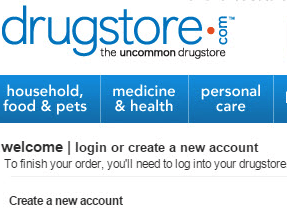Can you define your target audience? I’m not talking about who you want to buy your product — i.e., everyone — but rather who is likely to give you their business. Many small businesses miss this important point.
Identifying your online store’s target audience is crucial when it comes to marketing, search engine optimization, and website optimization. This audience depicts how the site should be designed, what features should be implemented, and how textual content should be presented.
Take, for example, Daddies Board Shop. This store targets young skateboard enthusiasts who have a decent idea of what they want. The product description is brief (too brief), the images clear, and there is a feature called “Get it Complete” that auto selects options from the attributes.
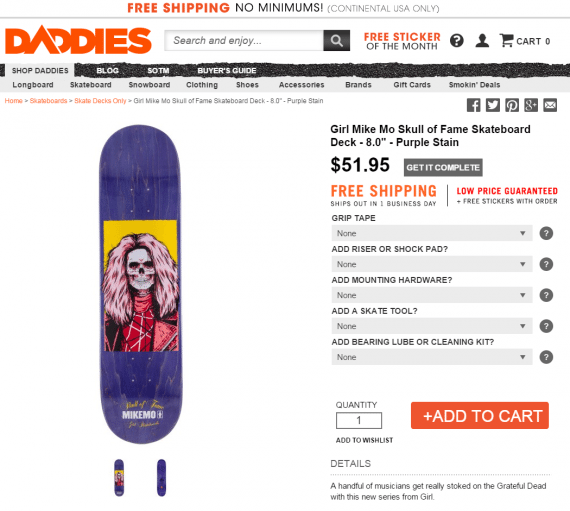
Next to each option on Daddies Board Shop is a hover button that displays the basics of the attribute. This is key to shoppers who are in the early stages of skateboarding trends.
Skate Warehouse presents the same product in a different color. This site includes a detailed product description, but offers it for sale as the “deck” only, or as part of a package. Shoppers can opt to build a custom skateboard, but that process starts them at the beginning of product selection.
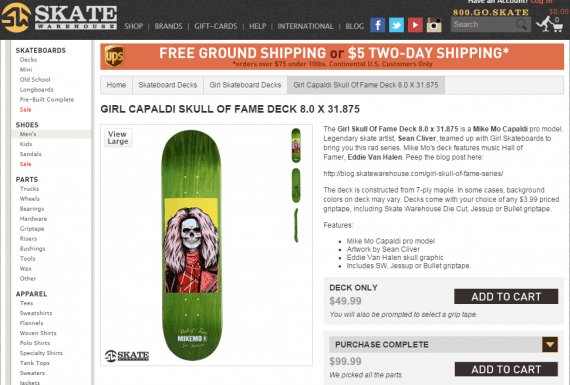
Skate Warehouse offers a better description, but no individual options for those who may already have some of the necessary parts or tools.
Whether your target market is young and hip, or older and more relaxed, there is a way to sell to people. However, without identifying and understanding the target audience, an online store doesn’t really speak to anyone.
Here are the basic steps of targeting potential loyal customers.
- Identify the problem your business solves. Every product presumably makes someone’s life or work easier, or fulfills a requirement. How do your offerings do that?
- Sketch out the ideal customer. Is it a male or female? Young, middle-aged, or elderly? Professions or hobbies? How does he or she communicate, both by method and language style?
- How much money do they make? This is key in determining pricing and how pricing is displayed. If prices on certain products are high, yet competitive, you’ll want to demonstrate the value of the item.
- What are their online habits? Are they occasional email checkers? Do they live online? Or are they something in between? This helps you determine how to sell products on the page using images, text, supporting content, and calls to action.
- Research. Most companies are tight-lipped about every detail of their target audience, but case studies and data reports do exist for some. Some of these reveal the psychographic details of your target customer, which can tell you why they buy. Also, look at competitor sites that feature customer reviews and discussions to learn what drives those customers to shop there.
If you’ve been in business for a while and already see decent conversions, Google Analytics can provide insight as to who your target audience currently is. You may be surprised at the results. You have to enable Advertising Features, which allows Google Analytics to collect additional data.
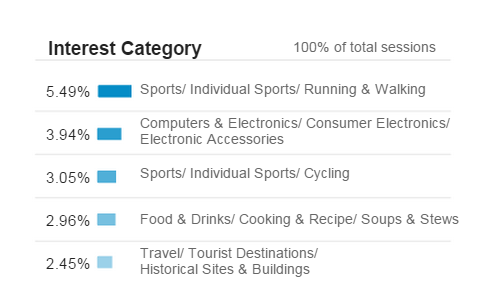
Example interest report for determining who is shopping the online store. Source: Google.
You can also survey existing customers, asking questions about their experience with your company, and wrapping up with questions that help narrow common interests and expectations. Offering an incentive — like a coupon or gift card — will garner more responses. Remember, loyal customers can tell you what works better than any third-party market report, which often focus on numbers, while real feedback gives you the down and dirty.
Now, You Can Speak with Your Audience
Armed with information about your target audience, you can set out to update navigation, product descriptions, and instructional text. You may realize that certain site features aren’t working and others are necessary.
Speaking with your audience helps boost conversions, even if you have difficulty competing against the big guys.
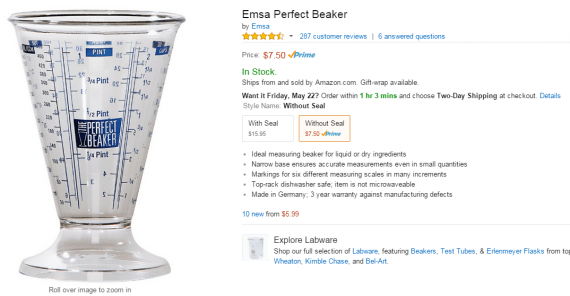
Amazon typically features manufacturers’ descriptions and images, which often use lots of jargon and big words.
—
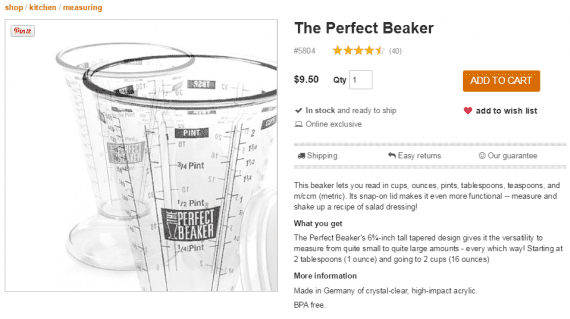
King Author Flour offers the same product, but with an easier to understand description. They also include the seal lid, which avoids complaints about “missing” pieces.
Even if you produce your own products, or sell exclusive ones, conversions rely on how products are presented.
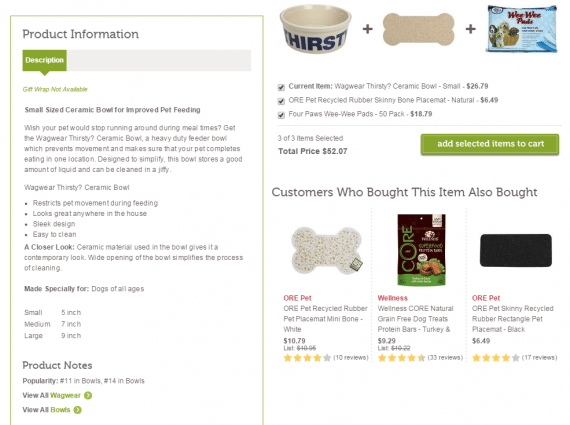
Would you spend $26.79 on a water bowl for your dog? The decision might hinge on the product description. Source: Wag.com
If your audience wants serious details, you can provide video, images, and text that explain how things are made or used. Adagio Teas does this by segmenting everything on its product pages — first, the details of the tea itself, followed by its origin and details about the farmers of the tea.
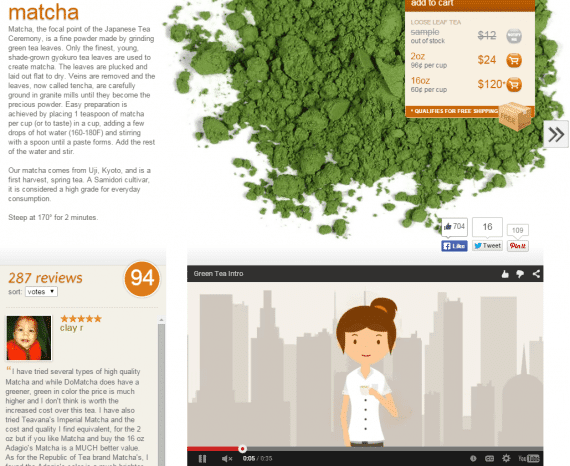
Adagio.com targets both new and seasoned tea drinkers. Product descriptions are highly detailed, and include steeping instructions.
—
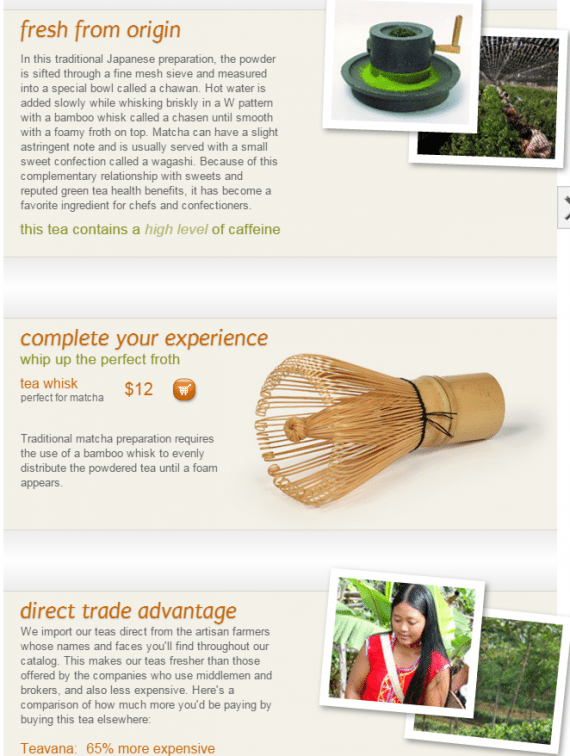
Serious tea drinkers want to know where it comes from and how it is harvested. Adagio.com is transparent about the process. It also compares its prices to common competitors.
If you’ve been struggling to find a way to increase conversions, look to your target audience. These existing and potential customers should, always, be the ones depicting how the store functions, looks, and delivers content.


